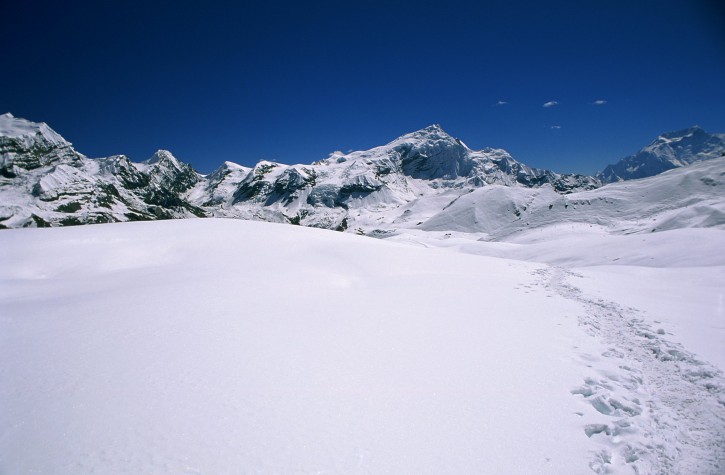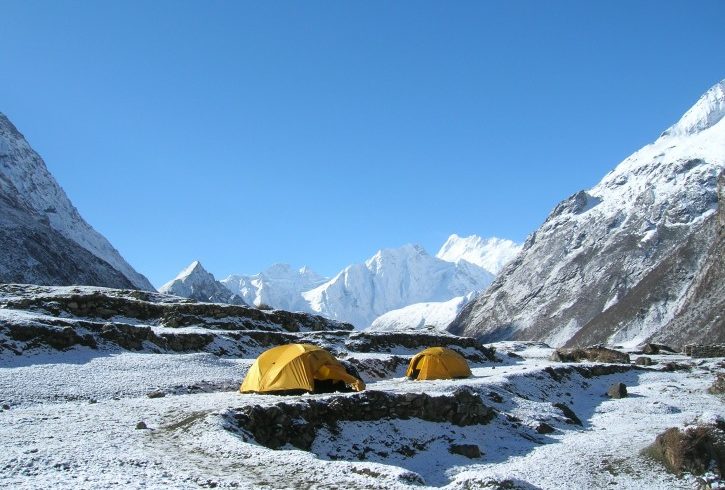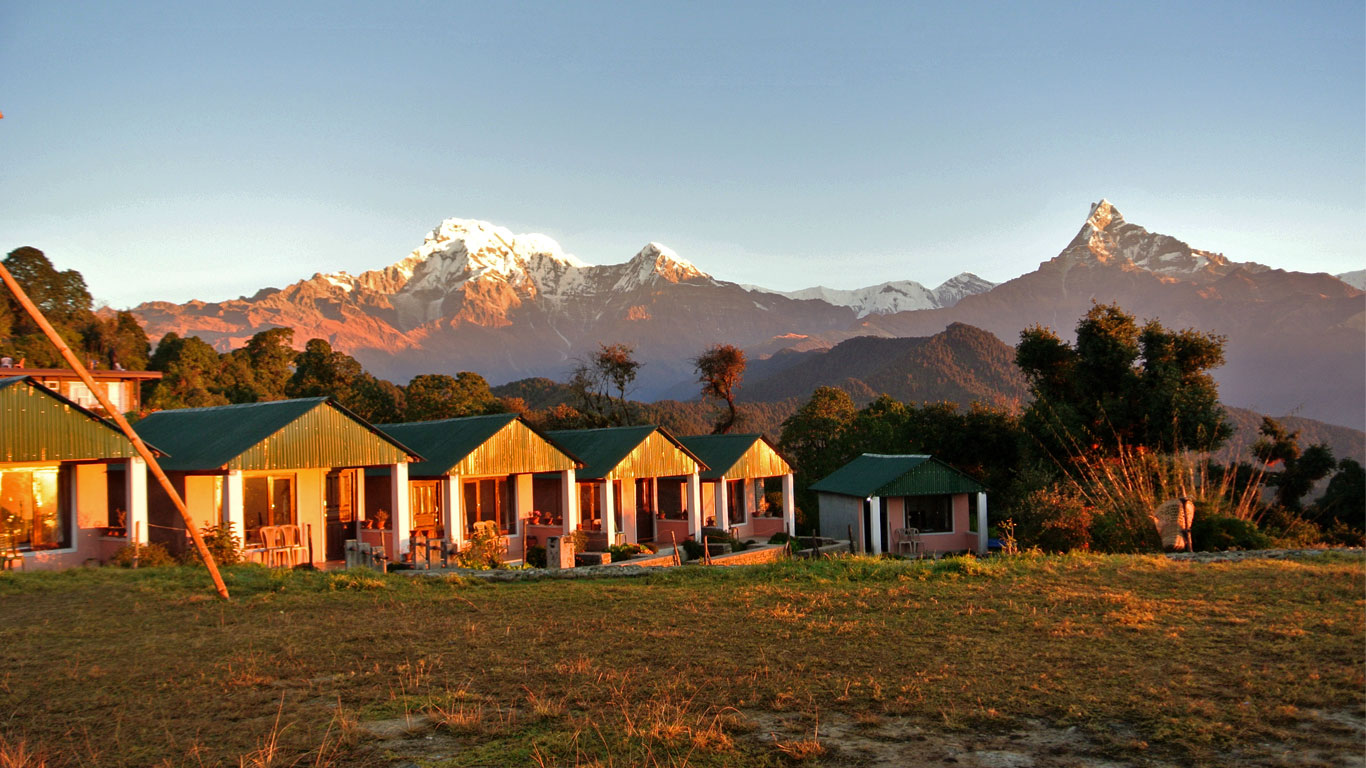Everest Three High passes Trek
Everest Region, Nepal
Duration
20 Hours
Tour Type
Trekking & Hiking
Group Size
15 persons
Location
Nepal
Overview
Everest Three high Passes Trekking Highlight Views of Mount Everest: One of the main highlights of the Everest Three High Passes Trek is the chance to see Mount Everest up close. The trek offers several opportunities to view the tallest peak in the world from various angles, including from the base camp itself. High-altitude passes: The trek is known for its three high-altitude passes, each offering stunning views of the surrounding peaks and valleys.
The three passes are Kongma La (5,535 meters), Cho La (5,420 meters), and Renjo La (5,340 meters). Sherpa Culture:
The trek also offers the chance to experience the local Sherpa culture, with stops in traditional villages and an insight into the daily lives of the Sherpa people. Unique Flora and Fauna:
The trek route passes through unique and diverse ecosystems, offering the opportunity to see a wide variety of flora and fauna, including the elusive Himalayan Snow Leopard. Spiritual significance:
The Everest Three High Passes Trek is also known for its spiritual significance, with several important Buddhist monasteries and stupas along the way. The trek offers a chance to learn about the local religion and culture and to connect with the spiritual history of the region.
Everest High Passes Trek is an exhilarating adventure in the Himalayas of Nepal that includes trekking on popular Everest trails while also discovering unique gems of the Khumbu region. On our trekking adventure, we cross three high passes in the Everest region - Kongma La Pass (5,535/18,159ft), Cho La Pass (5420m/17,782ft) and Renjo La Pass (5,340m/17,520ft) and set foot on the Everest base camp, climb Kala Patthar and Gokyo Ri; and tour Gokyo Lakes. This route also introduces trekkers to the remote and untouched Nangpa La Valley, the Sherpa village of Marlung and the monastery village of Thame.
Everest High Passes Trek is an ideal choice for a true adventure seeker looking for a challenging trek in the Everest region of Nepal which also involves crossing high mountain passes. If we are looking to undertake a slightly less adventurous trek than this but which includes Gokyo lakes, Kala Patthar and Everest Base Camp Trek.
Your adventure to three passes trek in the Everest region begins with an exciting flight to STOL airport at Lukla. We spend two nights at Namche for proper acclimation. Later on, we hike to the less trodden trail towards the Thame and Lungden close to the Tibet border. No doubt the Renjo la crossing is tough but very much rewarded with stunning views. From the pass, you can get the parades of Himalayan giants including Mt. Everest with pristine Gokyo lakes at a single frame. Besides that, we climb the Gokyo Ri, the first of our three peaks on our list to climb. Furthermore, we hike on the largest Ngonumpa glacier before crossing the Chola Pass. Ultimately we join the popular Khumbu valley trekking route to hike the Kalapathar peak and to explore the Everest base camp.
Furthermore, we trek to Chukung from Lobuche crossing the Kongmala the less trodden and tough pass but very rewarding. From Chukung we climb our third peak: Chukung Ri. The climb to the top of Chukung Ri offers a stunning view of Amadablam, Lhotse, Nuptse, Makalu. On our way down we trek via the Thyangboche monastery making a big circle to complete the three passes trek. Undoubtedly the entire journey is being accompanied by a hundred memories and a huge sense of achievement. Our experts' recommendation: If you are having a problem selecting the strenuous trekking in the Himalayas, then look no further. Simply book this three pass trek as it covers all the highlights which Everest region has to offer.
Why Everest 3 High Passes Trek?
Everest 3 High passes Trek is a challenging and exhilarating adventure that takes trekkers through the Khumbu region of Nepal. This trek involves crossing three high passes, namely the Cho La Pass, Kongma La Pass, and Renjo La Pass, all of which are situated at an altitude of over 5,000 meters. The trek also includes visits to popular destinations like Everest Base Camp, Kala Patthar, Gokyo Lakes, and Namche Bazaar. Here are some reasons why Everest 3 High passes Trek is worth writing 500 words about: It's a Unique and Challenging Adventure: The Everest 3 High passes Trek is not your typical trek. It's an adventure that challenges even experienced trekkers. The trek involves crossing three high passes, each with its own unique challenges. The Cho La Pass is a steep climb up a rocky terrain, while the Kongma La Pass requires you to scramble across a rocky ridge.
The Renjo La Pass is a long and steep ascent, but the views from the top are well worth the effort. Overall, the trek is a unique and challenging adventure that provides an opportunity to test your physical and mental endurance. It Takes You to Some of the Most Scenic Locations in the Khumbu Region: The Khumbu region of Nepal is home to some of the world's most scenic locations. The Everest 3 High passes Trek takes you through some of the most beautiful landscapes, including the Gokyo Lakes, which are a series of turquoise lakes set against the backdrop of snow-capped mountains. You'll also visit Everest Base Camp, which offers stunning views of Mount Everest and the surrounding peaks. Kala Patthar, one of the highest points on the trek, provides a panoramic view of the entire Khumbu region. You'll Experience the Local Culture and Traditions:
The Khumbu region is home to the Sherpa people, who are known for their hospitality and unique culture. During the Everest 3 High passes Trek, you'll have the opportunity to interact with the locals and learn about their way of life. You'll visit traditional Sherpa villages like Namche Bazaar, which is a hub for trekkers and climbers in the region. You'll also get to see the Tengboche Monastery, which is one of the most important Buddhist monasteries in the region. It's a Spiritual Journey: The Everest 3 High passes Trek is not just a physical journey, but also a spiritual one. The trek takes you through some of the most sacred places in the region, including the Tengboche Monastery, where you can witness the monks chanting and performing their daily rituals. The trek also takes you through the Khumbu Glacier, which is considered a holy site by the locals. It's a Great Way to Challenge Yourself: The Everest 3 High passes Trek is a great way to challenge yourself both physically and mentally. The trek requires a high level of fitness, endurance, and determination. It's an opportunity to push yourself out of your comfort zone and achieve something that you never thought was possible.
How Difficult Everest 3 High Passes Trek?
The Everest 3 High Passes Trek is one of the most challenging treks in the world. It involves crossing three high-altitude mountain passes in the Everest region, including the Cho La Pass, the Renjo La Pass, and the Kongma La Pass. The trek takes around 19 to 21 days to complete, and it requires a high level of physical fitness and mental strength. In this trek, you will also have to walk for long hours, sometimes for more than 8 hours a day. The first high pass that you will cross during the trek is Cho La Pass. It is located at an altitude of 5,420 meters above sea level, and it is the highest pass among the three. The trek to Cho La Pass is challenging, as it involves steep uphill climbs, rocky trails, and icy glaciers. The weather conditions can also be harsh, with strong winds and snowfalls.
The second high pass is Renjo La Pass, which is located at an altitude of 5,388 meters above sea level. The trek to Renjo La Pass is also challenging, as it involves steep uphill climbs and rocky trails. However, the views from the top of the pass are stunning, and you can see the beautiful Gokyo Lakes from there. The third and final high pass of the trek is Kongma La Pass, which is located at an altitude of 5,535 meters above sea level.
The trek to Kongma La Pass is challenging, as it involves steep uphill climbs, rocky trails, and icy glaciers. The weather conditions can also be harsh, with strong winds and snowfalls. Apart from the high passes, the trek also involves trekking through the beautiful Everest region, including the Khumbu Valley, the Gokyo Valley, and the Everest Base Camp. The trek also includes visiting the picturesque villages of Namche Bazaar, Dingboche, and Lobuche, which are known for their unique Sherpa culture and traditions. In summary, the Everest 3 High Passes Trek is a challenging trek that requires a high level of physical fitness and mental strength. It involves crossing three high-altitude mountain passes, walking for long hours, and facing harsh weather conditions. However, the stunning views and the unique cultural experiences make it a once-in-a-lifetime experience for any trekker who is up for the challenge.
Everest 3 High Passes Trek in Autumn?
The Everest 3 High Passes Trek in autumn is a popular choice among trekkers. The autumn season in Nepal starts in September and lasts until November. During this time, the weather conditions are stable, with clear skies, mild temperatures, and less precipitation. Here are some reasons why the Everest 3 High Passes Trek in autumn can be a great experience: Stable Weather Conditions: Autumn is considered the best season to trek in Nepal, including the Everest 3 High Passes Trek. The weather conditions are stable, with clear skies and mild temperatures during the day. The nights can be chilly, but it's nothing that a good sleeping bag and warm clothing can't handle. Less Crowded Trails: During autumn, the trails are usually less crowded than in the spring season. This means that you can enjoy a more peaceful trekking experience, with fewer trekkers on the trails and in the tea houses and lodges.
This also means that you have a better chance of getting a good spot in the tea houses and lodges without prior booking. Stunning Views: The autumn season offers stunning views of the surrounding mountains and landscapes. The clear skies provide excellent visibility, and the mountains are often covered with fresh snow from the previous night. The autumn season is also the time when the forests and hillsides turn golden and red, providing a beautiful contrast to the white snow-capped peaks. Easier Trail Conditions: During the autumn season, the trails are usually dry and stable, with less snow on the high passes.
This makes the trekking experience easier and safer. You don't have to worry about slipping on the muddy and slippery trails, and you can easily cross the high passes without much difficulty. In conclusion, the Everest 3 High Passes Trek in autumn is a great experience. The stable weather conditions, less crowded trails, stunning views, and easier trail conditions make it an ideal time to trek in the Everest region. Just make sure to pack warm clothing and a good sleeping bag, and you're good to go!
The Everest 3 High Passes Trek in spring?
The Everest 3 High Passes Trek in spring is another popular choice among trekkers. The spring season in Nepal starts in March and lasts until May. During this time, the weather conditions are mild, and the days are longer, making it a great time for trekking. Here are some reasons why the Everest 3 High Passes Trek in spring can be a great experience: Clear Weather and Stunning Views: The weather during spring in the Everest region is generally clear, with fewer clouds and mild temperatures. This makes it easier to see the stunning views of the surrounding mountains and landscapes. The days are longer in spring, providing ample time for trekking and enjoying the beautiful views. Colorful Scenery:
The spring season is also the time when the hillsides and forests are covered in colorful flowers and rhododendrons. This provides a beautiful contrast to the white snow-capped peaks and creates a picturesque setting for trekking. Cultural Festivals: Spring is also the season for many cultural festivals in Nepal, including the Holi festival and the Nepali New Year. This provides an opportunity to experience the local culture and traditions and interact with the locals. Challenging Trail Conditions: The trail conditions during spring can be more challenging compared to autumn. The melting snow can make the trails slippery and muddy, and the high passes can have more snow, making it more difficult to cross. However, with proper gear and preparation, the trek can still be a great experience. Crowded Trails:
The spring season is the peak trekking season in Nepal, and the trails can be crowded with trekkers. This means that the tea houses and lodges can be fully booked, and you may have to wait for a long time for a meal or accommodation. In conclusion, the Everest 3 High Passes Trek in spring can be a great experience if you're prepared for the challenging trail conditions and the crowded trails. The clear weather, stunning views, colorful scenery, and cultural festivals make it an ideal time to trek in the Everest region. Just make sure to book your accommodation in advance and pack appropriately for the changing weather conditions.
Included/Excluded
Itinerary Expand All Close All
Travel Styles
Facilities
FAQs
What is the Everest Three High Passes Trek?
How long does the Everest Three Passes Trek take?
What is the best time to do the Everest Three Passes Trek?
How difficult is the Everest Three Passes Trek?
Do I need permits for the Everest Three Passes Trek?
What are the main highlights of the trek?
What type of accommodation is available during the trek?
How do I reach the starting point of the trek?
What should I pack for the Everest Three Passes Trek?
Is the Everest Three Passes Trek worth it?
Reviews
Extra prices:
- {{total_price_html}}
- {{pay_now_price_html}}





